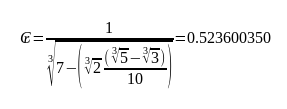[Note: the formulas below have been superseded by Cubit parts and more, updated ]
It is the mainstream academic consensus that ancient people based their measurements on body parts. As discussed in Some thoughts on the cubit (and foot) , I don’t think that’s necessarily so, despite at least two (the Persian and Roman feet) at one point being based on the length of the foot of their leader (or his over-sized statue).
I still think the names that these measurements became known as (cubit, foot, palm, etc) were backnyms to create a easy-to-use-and-remember name for a length.
Even something simple like measuring the width of a hand is not exact because fingers move, flesh compresses, etc., and fingers are not all the same width.
So… here’s a little exercise to show that we can get the same list of parts of the cubit just with maths. In some cases two different methods produce values on either side of the target.
Continue reading →




